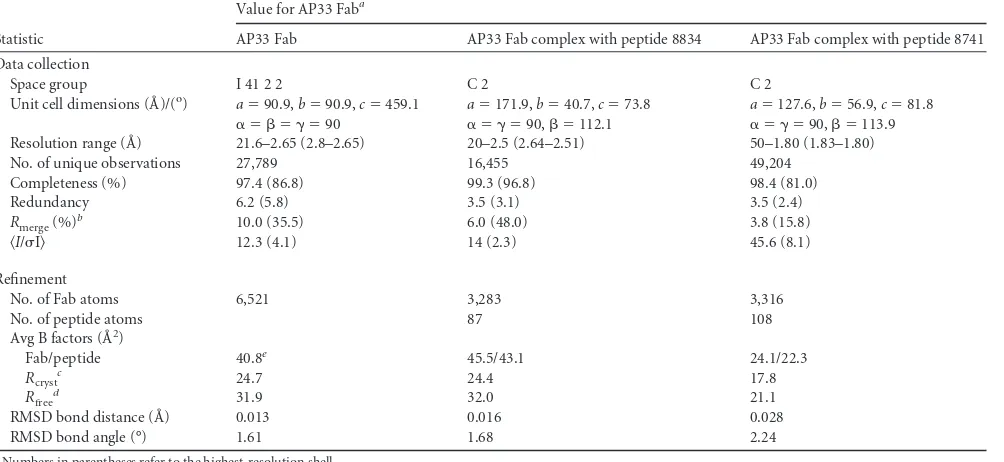Toward a Hepatitis C Virus Vaccine: the Structural Basis of Hepatitis C Virus Neutralization by AP33, a Broadly Neutralizing Antibody
Full text
Figure




Related documents
The reader is cautioned not to put undue reliance on these forward-looking statements, as these statements are subject to numerous factors and uncertainties outside of our control
After confirming antibody binding of designs, as well as atomic-level structure of a cyclic design bound to the HCV1 MAb, we tested the in vivo immunogenicity of these designs to
All four antibodies for which the peptide structure has been reported (HCV1, AP33, Hu5B3.v3, and 3/11) neutralize HCV infection (i.e., they bind to their respective epitopes at
Here, we have used competition binding assays and peptide binding assays to show that antibodies present in the antisera from vaccinated goats and humans bind epitopes overlapping
Distinct roles in folding, CD81 receptor binding and viral entry for conserved histidine residues of hepatitis C virus glycoprotein E1 and E2. Zhang W, Chipman PR, Corver J, Johnson
To date, the only MAb able to react with all HCV genotypes is AP33, a mouse MAb that is capable of potent neutralization of HCVpp representing a broad variety of HCV genotypes
The observed modest neutralization potency of IgG Z13e1, despite its very strong binding affinity for MPER peptides and recombinant gp41, strongly suggests that there are limitations
Thus, surface mapping of residues critical for F105 binding to the ligand-free and CD4-bound conformations suggests that the F105-bound conformation of gp120 will have an inner
